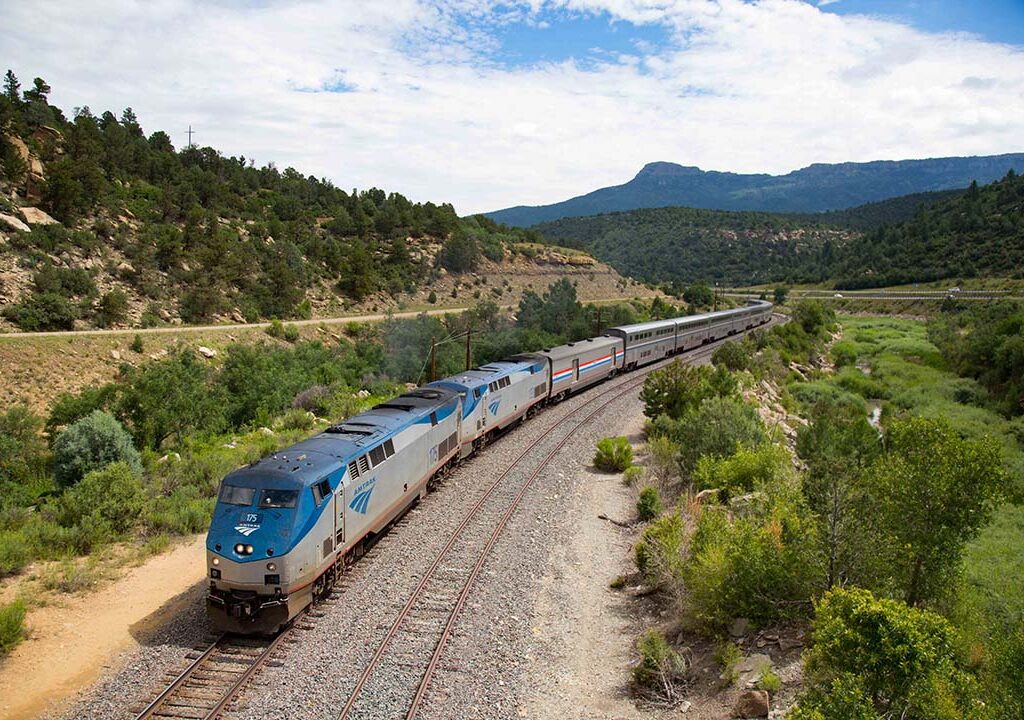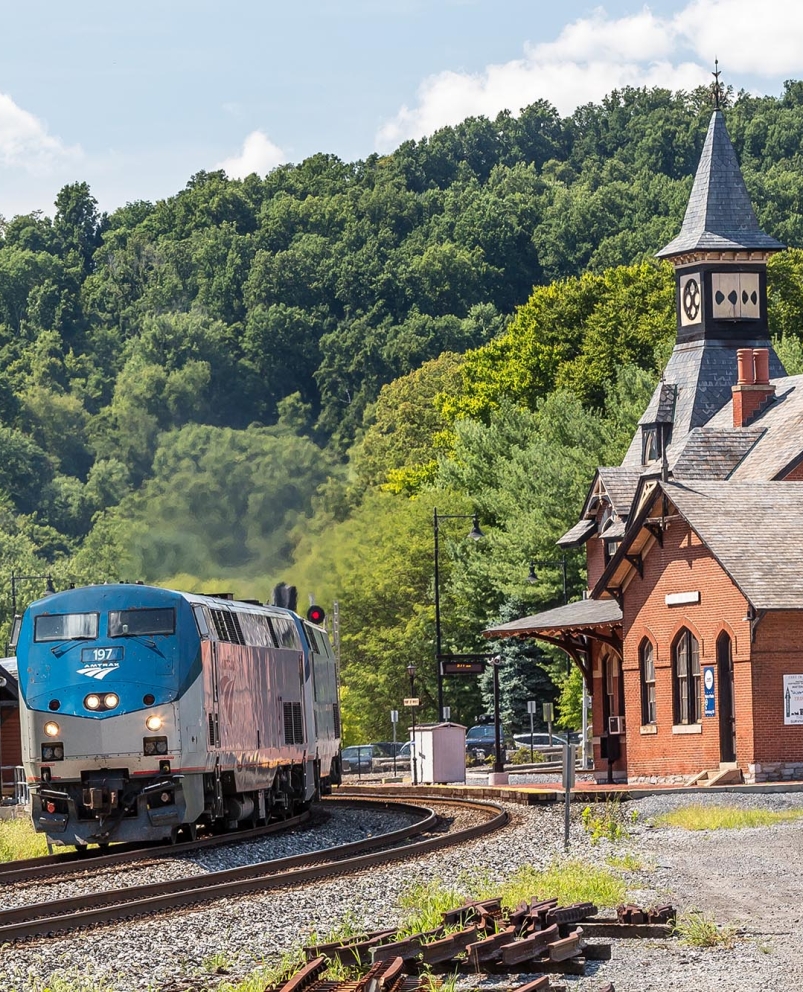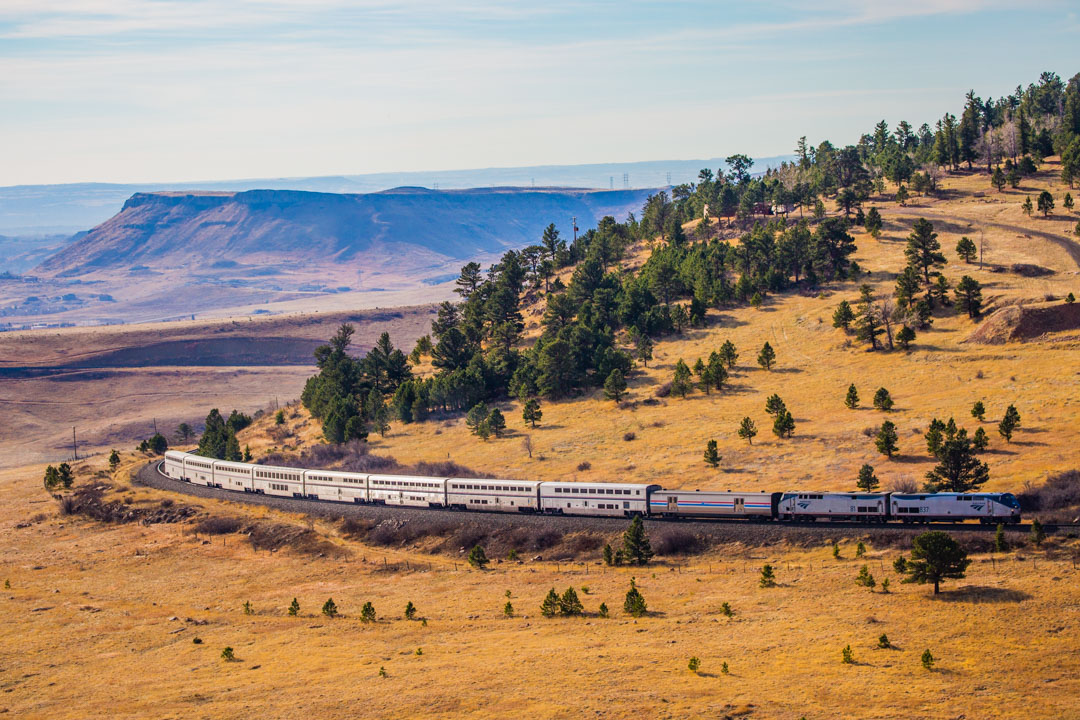Federal Railroad Administration
Amtrak Daily Long-Distance Service Study
The Federal Railroad Administration (FRA) is conducting an Amtrak Daily Long-Distance Service Study to evaluate the restoration of daily long-distance intercity rail passenger service and the potential for new Amtrak long-distance routes. This study will ultimately create a long-term vision for long-distance passenger rail service and identify capital projects and funding needed to implement that vision.
History
Amtrak was established by the Rail Passenger Act of 1970, which removed the requirement for U.S. railroads to provide intercity passenger rail service and created Amtrak to fulfill that role instead. In 1971, the US Department of Transportation (US DOT) designated 21 city pairs between which intercity passenger trains should operate, and Amtrak began service between those cities later that year.
The new passenger rail system was about half the size (by route miles) of the pre-1971 U.S. passenger rail system, which had been operated by multiple railroads. At the request of Congress, several long-distance routes were added to Amtrak’s system in the 1970s, but long-distance service contracted in the following decades – especially after a 1978 US DOT report that recommended significant service reductions. Long-distance network service reductions over the past 50 years have resulted in some communities losing common carrier transportation options, as well as the economic and social benefits of those connections.
What are
long-distance routes?
Statutorily Defined
Routes over 750 miles, between endpoints that Amtrak operates, as of the Passenger Rail Investment and Improvement Act of 2008.
Practically Applied
Amtrak operates 15 long-distance trains, ranging from approximately 760 to 2,500 miles. Long-distance trains provide service at nearly half of the train stations in the Amtrak system. In 2019, long-distance trains carried more than 4.5 million passengers.
What is
the Long-Distance Service Study?

Section 22214 of the Bipartisan Infrastructure Law (BIL) of 2021 tasks the FRA, under delegation from the Secretary of Transportation, with conducting an Amtrak Daily Long-Distance Service Study to evaluate the restoration of daily intercity passenger rail service and the potential for new Amtrak long-distance routes. Under BIL, the FRA is required to conduct a study to evaluate the restoration of daily intercity rail passenger service along:
- any Amtrak long-distance routes that were discontinued; and
- any Amtrak long-distance routes that occur on a nondaily basis.
- In evaluating intercity passenger rail routes, FRA may evaluate potential new Amtrak long-distance routes, including with specific attention provided to routes in service as of April 1971 but not continued by Amtrak, taking into consideration whether those new routes would:
- link and serve large and small communities as part of a regional rail network;
- advance the economic and social well-being of rural areas of the United States;
- provide enhanced connectivity for the national long-distance passenger rail system; and
- reflect public engagement and local and regional support for restored passenger rail service.
Why
study long-distance passenger rail?
The Long-Distance Service Study presents an opportunity to establish and bolster essential intercity passenger rail connections and build a stronger rail network overall—one that would allow people to get where they need to go safely and efficiently.
In some communities, long-distance trains are the only common carrier passenger transportation option available, and the long-distance network provides millions of Americans with transportation options other than a personal vehicle.
Study outcomes
The Amtrak Daily Long-Distance Service Study will:
- Evaluate options for restoring or enhancing to daily basis intercity passenger rail service along routes.
- Select preferred options for restoring or enhancing service.
- Develop a prioritized inventory of capital projects and other actions required to restore or enhance the service, including cost estimates for those projects and actions.
- Develop recommendations for methods by which Amtrak could work with local communities and organizations to develop activities and programs to continuously improve public use of intercity passenger rail service along each route.
- Identify Federal and non-Federal funding sources required to restore or enhance the service.

Schedule
In the coming months, we will continue to engage and listen to stakeholders, including transportation and rail partners, federally recognized tribes, and communities as we evaluate how to better connect people with long-distance rail services. This is the first time that many communities, partners, and stakeholders will be included in a study of this magnitude, and we are committed to forming diverse and inclusive groups in every region. Engagement for the Long-Distance Service Study began in September 2022 and will continue throughout 2023 and part of 2024.

Submit a comment
Thank you for your interest in the Long-Distance Service Study. You may submit a comment or question via the comment form on the link below. Please note that due to the breadth of the study, it may not be possible to respond to all feedback, but all feedback will be reviewed by the project team. Please email contactus@fralongdistancerailstudy.org for media inquiries.

